51 F. high in the Twin Cities Thursday.
63 F. average high for April 25.
73 F. high on April 25, 2012.
17.9" snow so far in April.
Highs near 70 today, Saturday and Sunday.
T-storms possible late Sunday, again Tuesday PM, steadier rain Wednesday.
Ring the Church Bells!
Like a long-lost loved one suddenly showing up
at your doorstep, spring will pay us a visit today. For the first time
since November 22 the mercury should push past 60F. Neighbors will
emerge from hibernation. Birds will chirp. The boss may actually smile.
Our tormented spring - cold, wet & snowy -
has proven difficult for the construction industry & outdoor sports.
Many programs are starting 30 days late, in search of suitable playing
fields.
As predicted, Minnesota's drought is fading
fast. 3 months ago 83 percent of the state was in severe drought or
worse. The latest U.S. Drought Monitor shows that number has dropped to
16 percent. Yes, the snow was a hassle, but over 7" of precipitation
since March 1 has replenished topsoil moisture, coming at a good time
for spring planting.
What's next? One of the latest ice-outs in
recent history (70s this weekend - as you gaze out an icy Lake Calhoun,
White Bear and Minnetonka).
Bizarre.
T-storms are possible late Sunday and Tuesday; steadier rain Wednesday as cooler air arrives.
I don't see any more accumulating snow - but a
stalled "cut-off" low will keep us damp, chilly & rainy late next
week. Savor this overdue warm front!
* photo above: Jenna Dorsey.
What A Week. I took the photo in the upper left
Tuesday morning, after waking up to a fresh 5" snow. From shin-deep snow
to 70, in 4 days? Even for Minnesota, where weather patterns are often
manic, that's impressive. Minnesotans earn their springs - especially
this year. File photo upper right from Marlo Lundy.
A Real Warm Front. Near 70F each of the next 3 days?
I can live with that. Tuesday may even be warmer with stronger
southwest winds ahead of a frontal passage capable of mid-70s; then
significanntly cooler by the end of next week. Pack away the coats, but
leave a few heavy jackets behind, just in case. The ECMWF model prints
out over 1" of rain between Sunday evening and Wednesday of next week.
What A Concept: "Spring". The models are all in
pretty tight alignment, showing upper 60s today, near 70 tomorrow and
low to mid 70s possible Sunday afternoon before a few T-storms pop up.
Savor the warmth, a reality check is brewing for the end of next week;
probably not quite chilly enough for snow.
Dodging A Muddy Bullet? Major flooding is still
expected along the Red River Valley next week, but a lack of significant
rain may prevent a worst-case scenario for Fargo and Moorhead. NOAA's
QPF rainfall summary suggests little rain for the Dakotas and Red River
Valley, but the ECMWF model is wetter. Parts of the southeast will pick
up some 2-4" rains over the next 5 days; the west is still very dry -
drought conditions shifting south/west toward New Mexico, Arizona and
California.
Drought Is Easing.
The percentage of Minnesota in severe drought (or worse) has dropped
from 83% to 16% in the last 90 days, according to NOAA and USDA. Much of
the Twin Cities metro is now out of the drought, but still running
drier than average. The trends are encouraging. For the latest U.S.
Drought Monitor
click here.
Chicago Logs Wettest April On Record, Midwest Rivers Swell.
Washington Post meteorologist Jason Samenow has an update on historic flooding gripping much of the Midwest; here's an excerpt: "
Heavy
rains have drenched the Windy City this month, leading to its soggiest
April on record. Through yesterday, 8.54 inches had fallen at O’Hare
International passing the 8.33 inches recorded in 1933.
Chicago has received frequent deluges in the last two weeks, but a
good chunk of the month’s rain occurred on April 18, when 3.54 inches
flooded the city – the most measured so early in the calendar year in a
single day. The heavy rains both in Chicago and surrounding regions of
the Midwest have led to rising rivers and widespread flooding..." (14 day rainfall chart courtesy of NOAA and the Washington Post).
Flood-Weary Fargo, ND Lobbies For Construction of 36-Mile Canal To Divert Water Around City. Here's an excerpt from
The Washington Post: "...
With
the region finally thawing out from another unusually snowy winter and
the river again rising, local leaders are using this year’s
communitywide campaign to build support for a 36-mile canal that would
steer the floodwater around Fargo and neighboring Moorhead, Minn., and
fix the area’s nagging problem once and for all. But the plan, which has
been kicked around for a few years, has drawn strong opposition from
upstream farmers, homeowners and businesses, who don’t want the
diversion channel carving through their communities. They say it’s
nearly $2 billion price tag is a waste of money, and North Dakota
legislators have balked at committing any of the state’s money until
the federal government gives the OK and puts in money of its own..."
Photo credit above: The Forum, David Samson, Associated Press. "
In
this April 17, 2013 photo, sandbags made a sandbag central are slacked
for deployment in Fargo, N.D., where the Red River has caused major
flooding in 3 of the the past 4 years. With the region thawing out and
the river rising again, local leaders are using this year's race to
stave off flooding..."
Drought To Floods For Some; Dryness Holds On To West. More weather-whiplash. Here's a snippet of a post at
Climate Central: ...“
Improbably, flooding has now replaced drought as the Midwest’s greatest imminent concern,” said Brad Rippey, U.S. Department of Agriculture
meteorologist, in a press release. “In fact, from April 20 to 23, the
Mississippi River rose to one of its five highest levels on record from
just south of Moline, Ill., to just north of St. Louis, Mo.” Numerous
snowfall records were broken during the month of April, including in
Boulder, Colo. and Duluth, Minn., which had their snowiest months of
any month on record, while many other locations had their snowiest
April on record. Meltwater from the snowpack should help ease drought
conditions, although it remains to be seen how much relief actually
takes place, since a sudden onset of mild spring weather could lead to a
rapid melt, which would not allow the water to penetrate deep into the
soil..."
Photo credit: "
Commander
Col. Christopher Hall (left) of the Army Corps of Engineers visits
levee districts along the Illinois River as the St. Louis District
flood fight teams support local efforts to brace for rising river
levels on April 21, 2013." Credit: U.S. Army Corps of Engineers.
America's Largest Tornado Outbreak: April 25-28, 2011. WeatherNation TV meteorologist Todd Nelson has an excellent overview of the mega-outbreak of late April, 2011, when 358 tornadoes touched down over a 4 day period: "2
years ago today, we started a near 4 day severe weather outbreak that
spawned nearly 360 tornadoes from Texas to Canada. April 27th, was the
most active and deadliest day with nearly 200 tornadoes; 4 of those
being EF5′s, which typically occur maybe once per year! Approximately
350 people were killed in the outbreak over 6 states; 238 of those in
Alabama alone. According to NOAA, this was the 4th deadliest outbreak in
U.S. history, which also caused 11 BILLION dollars in damage. Our
thoughts and prayers go out to everyone who was affected by the events
that unfolded 2 years ago."
Power Grids Iffy, Populous Areas Go For Generators.
After last year's record derecho that battered the Washington D.C. area
my relatives all fixated on what they wanted for Christmas: top of the
list? Emergency, gas-powered electrical generators. At a time of
increasingly severe storms and a sometimes unstable power grid it sounds
like a pretty good idea to me, too. Here's an excerpt of a
New York Times story: "...
Generator
makers do not release sales figures, but a report by the Consumer
Product Safety Commission in 2006 estimated that more than one million
generators a year are sold, with portable units making up roughly 90
percent of the sales. Leading manufacturers like Generac and Honda,
however, said sales had been unusually strong in the last several years
and that the percentage of standby units had risen steadily as
Tropical Storm Irene, Hurricane Sandy
and other major storms had led to widespread failures along the Eastern
Seaboard. “The market has certainly increased, not just because of
Sandy, but a plethora of weather events,” said Tom Pernice, marketing
manager in the generator division at the American Honda Motor Company.
“When you get a Sandy, a Rita, a Katrina, there are issues...”
Boston Magazine's Heart-Shaped Shoes: The Story Behind The Beautiful Cover. Here's an excerpt of an emotional story at
The Atlantic Wire: "
For
their May cover, following the Boston Marathon bombing, Boston
Magazine has created an indelible image made from shoes worn by the
marathon's runners. The cover, while evoking the horror of the bombing,
is primarily a forward looking message. Text inside the heart created
by the shoes reads: "We Will Finish the Race." Boston Magazine editor
John Wolfson explained that the cover "helps us get out of the moment a
little bit." "To me, the cover says perseverance, and the cover says
unity," Wolfson said in an interview Thursday morning...
Daily Rituals: How Novelists, Painters, Philosophers And Film-Makers Find Time Each Day To Do Their Work. Here's an excerpt of a fascinating series from Mason Currey at
Slate: "...
One’s
daily routine is a highly idiosyncratic collection of compromises,
neuroses, and superstitions, built up through trial and error and
subject to a variety of external conditions. That said, there are
certain behaviors that cropped up over and over again in my research. A
large number of novelists and poets, for instance, wake up early in
the morning and try to get some words on the page before other
obligations kick in. Composers, I've found, almost invariably take a
long daily walk. And if you suspect that caffeine is the real engine of a
good deal of creative activity, well, you may be on to something..."
Virgin's Creepy New In-Flight Flirting Service. This gives new meaning to "coffee, tea, or me?" Ugh. Just give me WIFI and let me sleep, please. Here's an excerpt from
The Week: "
Virgin America kicked off
its new Los Angeles to Las Vegas route this week. That in itself isn't
too newsworthy — plenty of airlines make the short hop from the City
of Angels to Sin City. But the new in-flight option Virgin rolled out
along with the new route has people talking — maybe even hooking up.
The "seat-to-seat delivery" service
lets Virgin passengers use their seat's in-flight entertainment
console to order a cocktail, a snack, or even a meal for a flier in any
seat in the cabin. Yes, says Mary Forgione at The Los Angeles Times, "it's a flirty seat-to-seat way to hit on someone in midair..."
Almost Spring. Thursday highs ranged from 43 at
International Falls to 44 Duluth (a whopping 19" snow still on the
ground), to 49 at St. Cloud and 51 in the Twin Cities. Temperatures shot
up close to 60F over far southwestern Minnesota, a hint of what's to
come (here) later today.
TODAY: Early shower or sprinkle, then mild sun. Winds: SW 10-15. High: 68
FRIDAY NIGHT: Clear to partly cloudy. Low: 44
SATURDAY: Lukewarm sun. Very nice. Winds: SW 10+. High: 71
SUNDAY: Warm sun, late-day T-storm. Wake-up: 51. High: 74
MONDAY: Partial clearing, slightly cooler. Wake-up: 49. High: 68
TUESDAY: Humid. Strong late-day T-storms? Wake-up: 55. High: 74
WEDNESDAY: Gray and cooler. Periods of rain. Wake-up: 47. High: 51
THURSDAY: Lingering clouds, chilly. Wake-up: 45. High: 49
Climate Stories...
Historical Climate Study Reveals Humans' Role In Current Warming.
LiveScience has the story; here's an excerpt: "...
The
team of 78 authors identified a long-term cooling trend that ended
late in the 19th century, followed by warming in the 20th century
despite the persistence of natural factors from the previous period.
"The natural forces driving the cooling are still present today, but
since the 19th century, an additional, stronger, warming driver has been
added: human activity," study researcher Paul Filmer, a program
director in the National Science Foundation's Geosciences Directorate,
said in a statement. "We cannot match the temperature records since then
without factoring in this new driver..."
Image credit above: "
This photo from NASA's Suomi
NPP satellite shows the Eastern Hemisphere of Earth in "Blue Marble"
view. The photo, released Feb. 2, 2012, is a companion to a NASA image
showing the Western Hemisphere in the same stunning details. This photo
was taken on Jan. 23." Credit: NASA/NOAA.
What If We Never Run Out Of Oil? As technology
improves we can tap new forms of carbon, in previously inaccessible
regions of the planet, under the Arctic, deep-sea, etc. But even though
gas burns cleaner than coal and oil - is this race for new gas (and
methane hydrate) deposits slowing the march toward a lower carbon energy
future? Probably. Here's an excerpt from
The Atlantic: "...“
Methane
hydrate could be a new energy revolution,” Christopher Knittel, a
professor of energy economics at the Massachusetts Institute of
Technology, told me. “It could help the world while we reduce greenhouse
gases. Or it could undermine the economic rationale for investing in
renewable, carbon-free energy around the world”—just as abundant shale
gas from fracking has already begun to undermine it in the United
States. “The one path is a boon. The other—I’ve used words like
catastrophe.” He paused; I thought I detected a sigh. “I wouldn’t bet on
us making the right decisions.”
Image credit: Ralph Wilson, AP.
Conservatives Come Out For Renewable Energy Projects.
They may be swimming upstream (today), but there are a handful of
Republicans who are trying to do the right thing, and use tax code to
encourage renewable energy sources to compliment our fossil fuel
sources. Here's a clip from
The National Journal: "
Defying
conventional wisdom in the era of Solyndra, conservatives in Washington
are coming out to back renewable energy. Specifically, some
conservative groups, including Americans for Prosperity, as well as
conservative Republicans such as Rep. Mike Pompeo of Kansas support the
idea of expanding a business structure known as a “master-limited
partnership,” or MLP, which is currently available only to oil,
natural-gas, and coal-mining projects, to also be available to
renewable-energy projects. Sens. Christopher Coons, D-Del., and Lisa
Murkowski, R-Alaska, are introducing legislation Wednesday that would
do just this. A bipartisan group of House members is expected to follow
suit this week with a similar proposal. In simplified terms, MLPs are
businesses set up as partnerships that are taxed only once—via the
shareholders—not at both the shareholder and corporate levels, as
publicly traded corporations are..."
Photo credit above: "
Rep. Mike Pompeo, R-Kan."
(Chet Susslin).
Climate Change Making Allergy Season Even Worse, Experts Say.
Great news! Most years spring arrives sooner, autumn lingers longer -
leaving more time for sniffling and sneezing, according to this except
of a
Medill School article: "
Allergy sufferers
know it's spring when they start sneezing, getting itchy eyes and
other symptoms. Now experts say that climate change is only making
things worse. The changing climate has brought early spring, late-ending
fall and large amounts of rain and snow, which are some of the
contributing factors that prolong pollen seasons, according to
allergists. “The planet is getting warmer,” said Melrose Park allergist
and immunologist Dr. Rachna Shah. “Allergy season has been longer than
usual, as plants are stronger and are able to produce more pollen.
It’s a trend that we can’t deny.” Over the last couple of years pollen
season has started two to four weeks earlier and extend four weeks
longer into the fall, said Dr. Clifford Bassett, medical director of
Allergy and Asthma Care of New York..."
Photo credit above: Kleopatra / Foter.com / CC BY-SA. "
Allergy season is longer and plants are producing more pollen due to climate change."
Oceans Are Feeling The Heat. Here's an excerpt of a post from Skeptical Science and
LiveScience: "
Most
discussions of global warming focus on the temperature of the air at
the Earth’s surface, where over the past decade warming has slowed.
This has resulted in misleading declarations that global warming has
"paused." However, failing to consider the heating of the oceans misses
the bulk of global warming. Global warming hasn't paused, it's
accelerating, especially in the oceans, according to a new study
published online in the journal Geophysical Research Letters (GRL). In
fact, only about 2 percent of global warming from the increased
greenhouse effect is used in heating the air, while about 90 percent heats the world’s oceans, according to the Intergovernmental Panel on Climate Change..." (Image: Key West National Weather Service).
California's Dream To Be The Saudi Arabia Of Solar Dries Up In The Desert.
Quartz has an interesting story - here's an excerpt: "...
So
why are big solar thermal projects in the desert fizzling, while
installations of rooftop photovoltaic panels in cities and suburbs
continue to set records? It’s all about money, technology and location,
location, location. Unlike photovoltaic panels, which directly convert
sunlight into electricity when photons strike silicon cells, solar
thermal power plants deploy mirrors called heliostats, which focus the
sun on a liquid-filled boiler to generate steam. The steam in turn
drives an electricity-generating turbine, like those found in
conventional power plants. Solar thermal plants are more efficient than
solar panels at generating electricity and are less prone to having a
passing cloud interrupt power production. The heat they generate can
also be stored in molten salt and released at night to keep the turbine
going..." (file image: Wikipedia)
Arctic Air Chemistry Could Be Altered By Sea Ice Loss, New Study Finds. Here's a clip from a story at Our Amazing Planet and
Huffington Post: "...
Now, a team of scientists have found evidence that the Arctic warming
and melting sea ice could be changing the chemistry of the Arctic
atmosphere through reactions that happen on the snow that sits atop the
sea ice and in the air above it. These reactions purge pollutants from
the atmosphere and destroy toxic surface-level ozone (which differs
from the protective ozone layer
higher up in the atmosphere). Air temperatures in the Arctic are 7
degrees Fahrenheit (4 degrees Celsius) higher now than they were in the
period from 1986-1996, according to the National Snow & Ice Data
Center, which keeps tabs on the seasonal fluctuations in sea ice.
Satellite records have shown that the area of the Arctic Ocean covered
by sea ice at the end of the summer melt season has declined by 30
percent over the past three decades, the NSIDC says..."

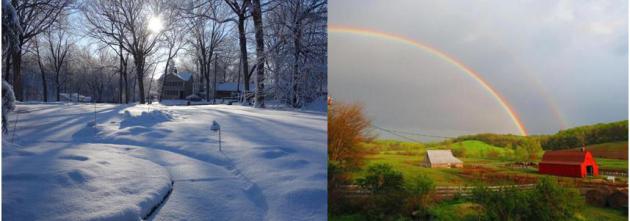

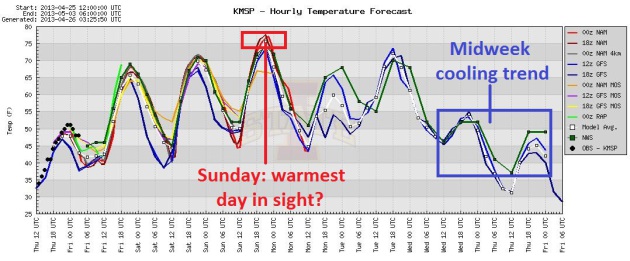
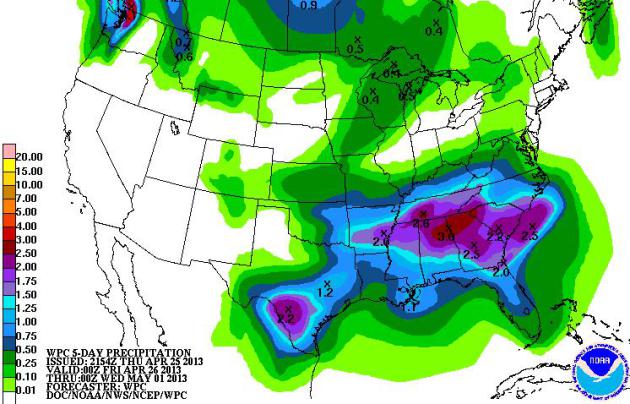
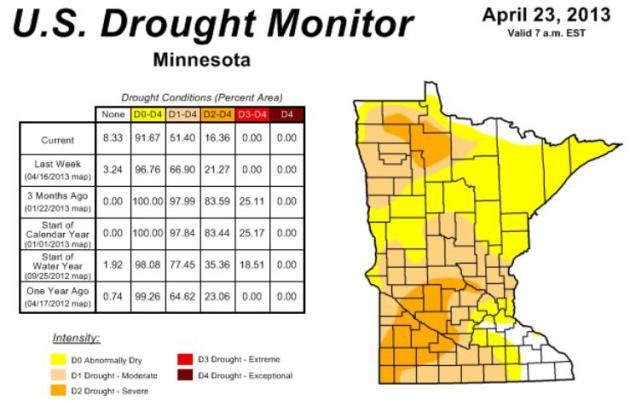
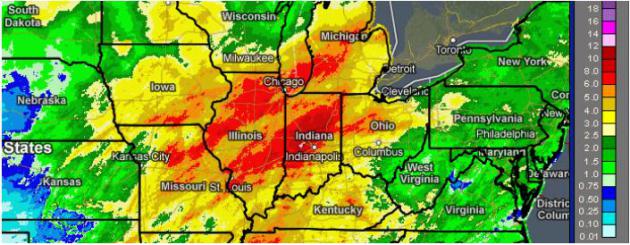

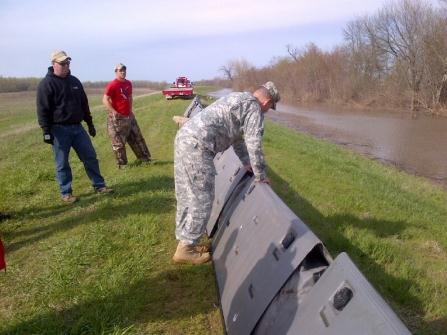







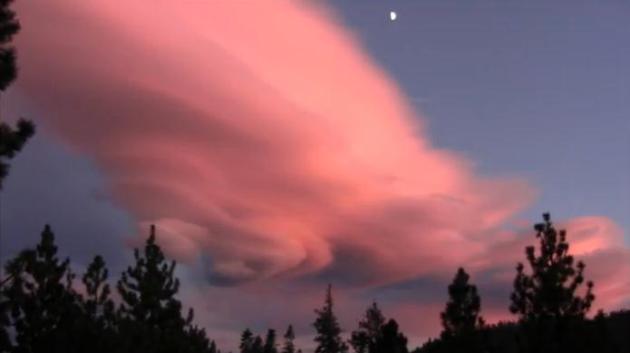

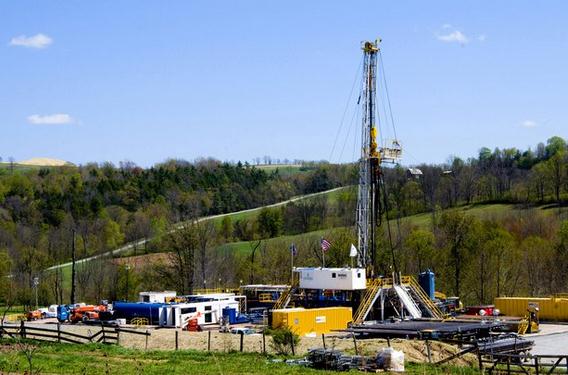



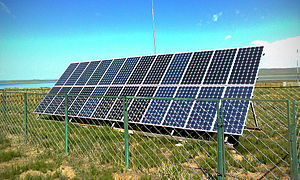
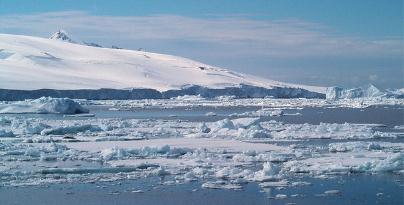
No comments:
Post a Comment